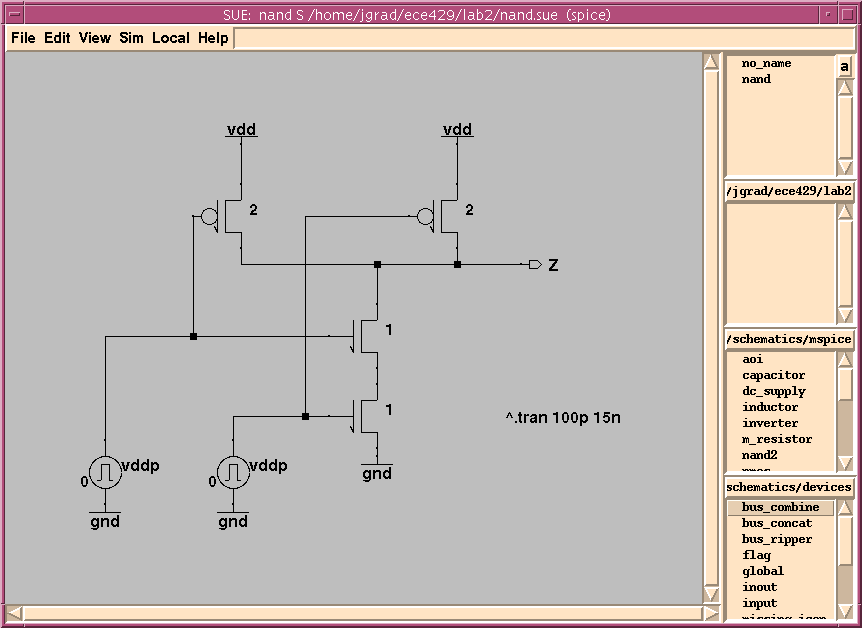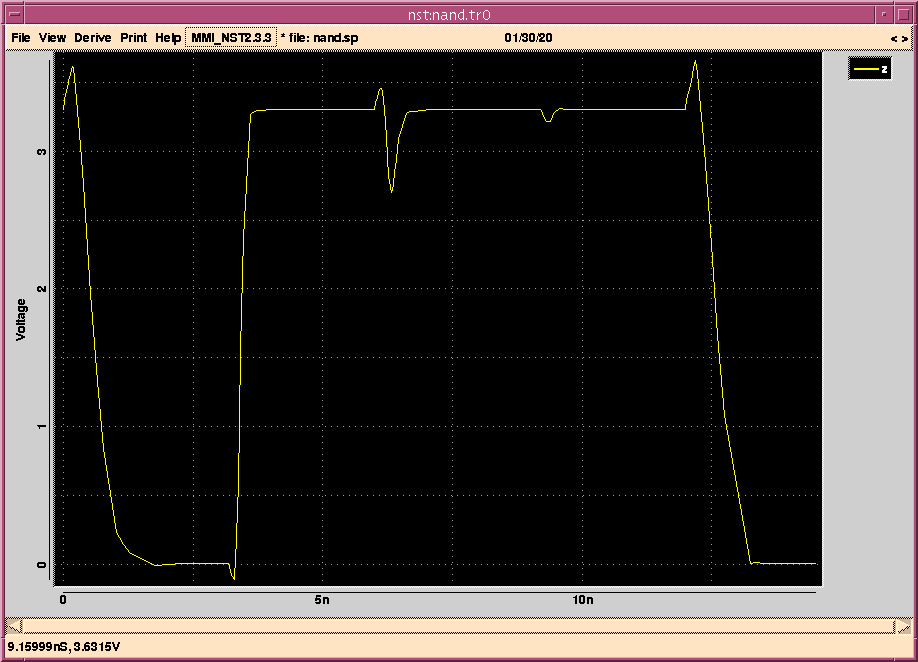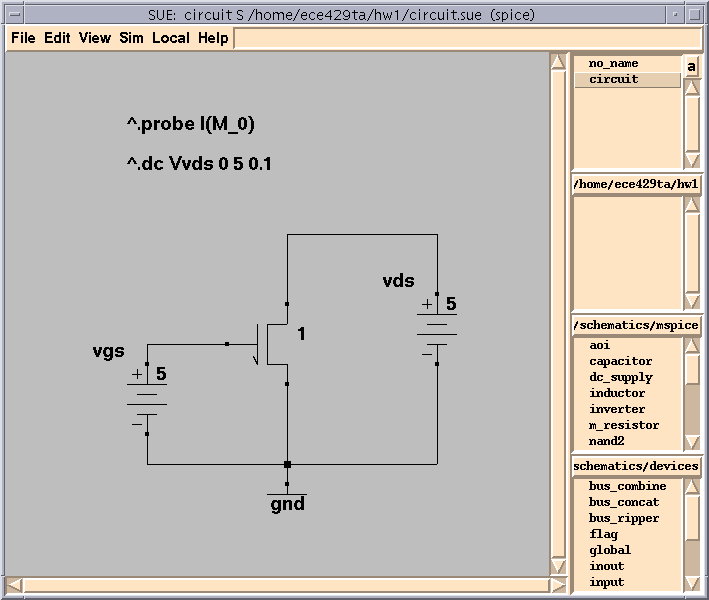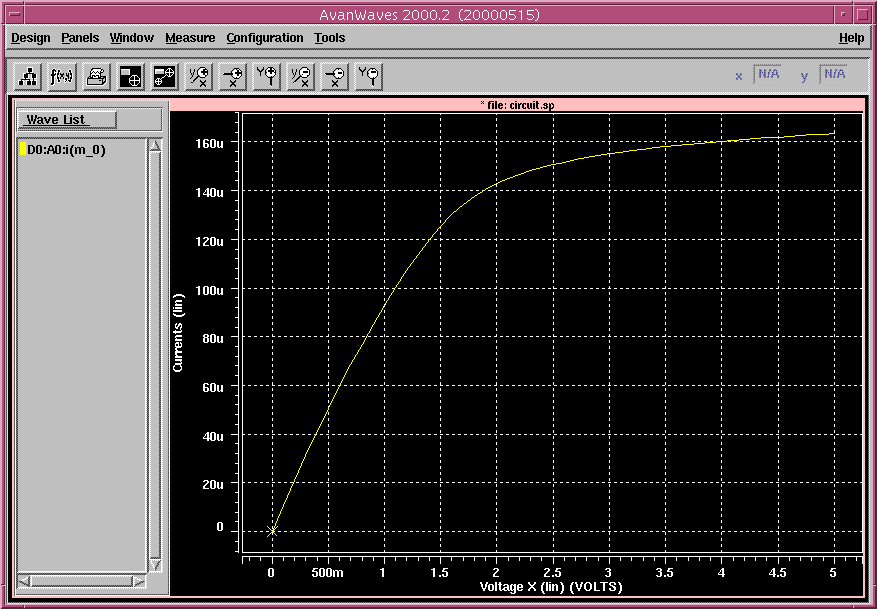Using HSPICE effectivly with SUE
This pages describes how to start HSPICE from within a Sue schematic. In
addition, NST is used to quickly draw waveforms right out of Sue.
The following describes how to do that by using a standard Nand gate.
Both, examples for transient analysis and for dc-analysis are given.
Example 1: Transient Analysis
-
Enter the following Schematic:

Use the "t" command to enter text. As inputs you can use the "pulse"
icon. Doubleclick on it and enter some waveform values. The actual waveforms
don't matter too much for now.
-
Be sure you are in "spice" mode. If necessary do "Sim | Change Simulation
Mode..."
-
Hit "h" to produce a netlist and run it through HSPICE. You can follow
the progress in the Sue terminal window
-
In the end, a "nst" window like the following will come up:

-
Now you are ready to plot nodes: In Sue, highlight a wire by clicking on
it. Then hit "p" to print the net, or "o" to un-print the net. All those
commands are also listed under the "Sim" menu in the menubar.
Example 2: DC Analysis
Performing a dc-sweep is not quite as straightforward as a transient
analysis. The reason is that nst tries to open a .tr0 file, which
is the standard output file for transient anlysis. DC-analysis however
defaults to a .sw0 file. In addition, "awaves" seems to handle sweep plots
better than "nst".
Therefore, the following procedure is recommended for DC-Analysis:
-
Enter the schematic as follows:

-
The battery symbols are called "dc_supply". Double-click on them and give
them the shown names and voltages.
-
In the ".dc" command it is necessary to use "Vvds" since SUE will
put a "V" before all source-names.
-
The probe command is necessary since by default only voltages are saved.
-
Hit "h" to run HSPICE. At the end there will be an error "Aborting,
can't find data output file circuit.tr0"
-
Switch to another terminal, change to the directory where your schematic
is located
-
Start "awaves", which looks like the following:

-
In "awaves" there will be a results browser, where you simply double-click
on "I(M_0)".
How does it work?
Its a very straight forward process: Sue produces a spice netlist with
all transistors and sources on the schematic webpage. Then it loads the
transistor models for the AMI 0.5um technology and adds them to the netlist.
Finally it puts all text that starts with "^" into the netlist. Thats the
way to specify what kind of simulation to run. Usually you want to run
a transient simulation, so you use the ".tran stepsize stoptime" command.
Stoptime is the total time you want to run the simulation and stepsize
is the maximum time step HSpice will take.
Instead of putting symbols for the input signals, you can also put commands
like ".dc" onto the schematic page. Anyting that follows the HSpice syntax
is allowed.
If something fails, look in the Sue command window for a "*error*" message.
1/30/02 Johannes Grad




